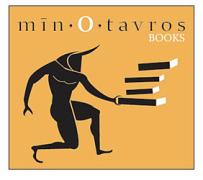New-York Historical Society Hosts Special Hamilton Installation Through November 29
New York, NY, October 20, 2015—Best-known for his appearance on the $10 bill and most recently the subject of Lin-Manuel Miranda’s award-winning musical, Alexander Hamilton continues to capture the imagination of Americans. In partnership with the Gilder Lehrman Institute of American History, the New-York Historical Society is presenting a special installation of artifacts and documents that illustrate the story of Hamilton’s eminent career and infamous death. On view through November 29, 2015, the display includes the original pistols from the 1804 duel with Vice President Aaron Burr that cost Hamilton his life.
This special installation will complement New-York Historical’s annual gala event on November 9, 2015, which will celebrate the two men who have made this inimitable Founding Father once again topical: Lin-Manuel Miranda, playwright and star of the hit Broadway musical Hamilton, and Ron Chernow, esteemed historian and author of the award-winning biography Alexander Hamilton.
Objects on view include the infamous Hamilton-Burr dueling pistols (ca. 1797), which belonged to Hamilton’s brother-in-law John Church, on loan from the JPMorgan Chase Historical Collection. Made of walnut, brass, and metal by the celebrated Wogdon Gunsmiths, the intricate weapons were favored by duelers since Robert Wogdon opened his first shop in London in 1774. Exhibited with the notorious pistols are documents related to Hamilton’s political career and personal life, including a 1780 letter written by Hamilton while serving as George Washington’s aide-de-camp during the American Revolution that reveals his frustration with the weak central government. Also on view is a first edition of The Federalist: A Collection of Essays (1788), authored by Hamilton, James Madison, and John Jay, explaining the importance of the proposed new form of government in order to secure ratification of the Constitution.
While serving as Treasury Secretary under Washington, Hamilton issued a report on public credit (1790) that advocated for the creation of a national bank. A copy of this report on display shows the first federal budget that lists the salaries for major government positions. Hamilton’s involvement in the pursuit of anti-slavery legislation is revealed by a New York City directory (1790), listing him as president of the New-York Society for Promoting the Manumission of Slaves. On a more personal note, in an intimate letter to his fiancée, Elizabeth Schuyler, Hamilton discusses their plan for a secret wedding and casts himself as “a Statesman and a soldier metamorphosed into a puny lover.” Above the display of documents hangs New-York Historical’s portrait of the statesman by John Trumbull, painted shortly after Hamilton’s untimely death in 1804.
In addition, a selection of original manuscript documents and contemporary printed works evoking Hamilton’s several personas—scholar, soldier, statesman, and infamously, duelist—are on display in New-York Historical’s Patricia D. Klingenstein Library. Documents on view include a pay roll for Hamilton’s artillery company, written in his hand; a rare newspaper copy of Hamilton’s “The Federalist No. 1” that appeared in print prior to the publication of the book in the Gilder Lehrman display and was the first printing of all The Federalist essays; John Lansing’s notes on Hamilton’s speech at the Constitutional Convention; and a little-known letter written by Hamilton in the wake of the nation’s financial panic of 1792.
















